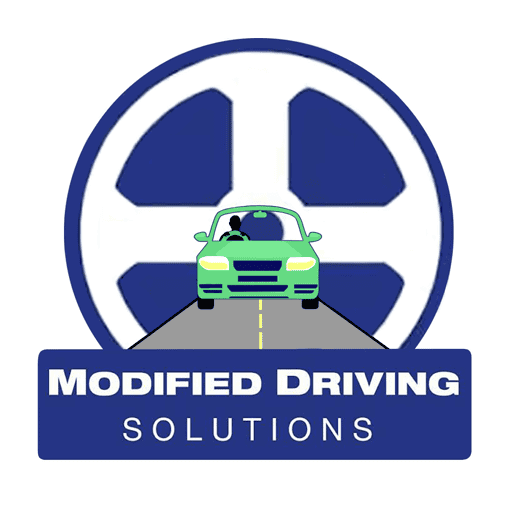Driving is more than just a skill—it's a pathway to greater independence and opportunity. For many, hopping behind the wheel is a rite of passage into adulthood, while for others, it represents a necessary lifeline to the world outside.
But what happens when traditional driving lessons and strategies don't account for the diverse needs of all potential drivers? That's where the Occupational Therapy Driving Skills Test (OT-DST) steps in.
In this article, we'll explore the intricacies of the OT-DST, particularly for new drivers, driving instructors, NDIS participants, and drivers with medical conditions or disabilities.
What is the Occupational Therapy Driving Skills Test?
The Occupational Therapy Driving Skills Test is a specialised evaluation examining an individual's ability to drive safely in accordance with legal principles.
Unlike the standard Transport for NSW driving test, the OT-DST looks at how a medical condition or disability may be affecting driving. It evaluates both the physical and cognitive skills required for safe driving, ensuring that all drivers are adequately equipped for the road. A typical OT-DST includes an in-depth assessment of vision, reaction time, decision-making, and physical coordination.
By considering these factors, the test provides a comprehensive appraisal tailored to each person's unique capabilities and challenges. This ensures a fair assessment for everyone, regardless of their starting point. Not only does the OT-DST offer a more inclusive testing environment, but it also emphasises safety—a priority for all road users.
By focusing on the specific needs of each driver, the test helps identify areas for improvement and recommends adaptive strategies or modifications when necessary. This in-depth assessment allows the OT to recommend the most appropriate strategies to give the person the best chance to successfully obtain their driver's licence, despite a medical issue.
Why Do We Need the OT-DST?
The need for an inclusive driving skills test is evident, particularly for new drivers and those with medical conditions or disabilities. Traditional tests may not address the specific challenges faced by these individuals, potentially limiting their opportunities for independence.
The OT-DST acknowledges these differences and offers a supportive path forward. Drivers with medical conditions or disabilities can face various difficulties that impinge on their ability to drive. The OT-DST considers these factors, identifying adaptive strategies or equipment that can facilitate a safe driving experience.
This personalised approach empowers individuals to maintain autonomy without compromising safety.
Breaking Down the OT-DST Evaluation Process
Step 1 Initial Consultation – Confirming Medical Issue or Disability
The process begins with an initial consultation (via phone) with an appropriate occupational therapy service. Details such as the medical reason prompting the assessment, doctor referral and other relevant medical history will be identified.
This conversation helps the OT understand the person's needs and specific areas of focus. If the person has physical difficulties, pertinent vehicle modifications will be organised for the on-road portion of the assessment.
Step 2 Off-road Assessment
On assessment day, an off-road assessment evaluates the individual's visual, physical and cognitive abilities. This includes testing vision, reaction time, decision-making, processing speed, and motor skills, all of which are essential for safe driving. The results provide a baseline understanding of the individual's capabilities and how their driving capacity may be influenced by their medical condition/disability.
Step 3 On-road Assessment
Finally, an on-road assessment sees the OT observing the person's driving abilities in a real-world setting. The occupational therapist observes their performance, noting any challenges and offering feedback on areas for improvement. In situations where vehicle modifications are required, the assessment's focal point will resemble a lesson, where the person will be orientated to the modifications.
Tips for Preparing for the OT-DST
Preparation is key to success in any test, and the OT-DST is no exception. Here are some tips to help individuals feel confident and prepared as they approach their evaluation:
Seek Guidance from Professionals
Consult with your doctor (GP or specialist) and confirm the medical issue leading to the assessment. If you are already engaged with other health professionals, you could prepare to build on specific skills such as memory, recall, information processing and decision-making. If there are physical deficits involved (e.g. weakness in arms or legs), appropriate exercise or adaptive equipment may help improve these areas.
Practice Regularly
If possible, enrol in regular driving practice in various conditions and environments. This helps build confidence and reinforces safe driving habits, both of which are crucial for a successful assessment.
Note that you must confirm that your licence is active and abide by any conditions present (e.g. in some instances, Transport for NSW place conditions where the person can only drive with a driving instructor until they undergo the assessment).
Stay Informed
Educate oneself on the OT-DST process and what to expect during the evaluation. Understanding the test's components can alleviate anxiety and help individuals approach the test with confidence.
Real-life Testimonials from OT-DST Participants
Hearing from those who have successfully completed the OT-DST can provide encouragement and insight for prospective participants. Here are a few real-life testimonials from individuals who have gone through this process:
Sharon's Story
Sharon, a young woman with multiple sclerosis, shares how the OT-DST helped her regain independence and get her licence back. "I was nervous at first, but the occupational therapist was supportive and understanding. Learning to drive with vehicle modifications was a big adjustment, but my OT and driving instructor prepared me for the Transport for NSW test."
Tom's Experience
Tom, an NDIS participant with anxiety and mental health challenges, found the OT-DST to be a positive experience. "The test felt overwhelming initially, but the OT strategised a clear driving plan for me, and I was able to obtain NDIS-funded driving lessons. I am now working towards getting my P's licence".
The OT-DST's Role in NDIS and Disability Support Programs
The OT-DST plays a significant role in the National Disability Insurance Scheme (NDIS) and other disability support programs. By offering an assessment tailored to individual needs, the test empowers participants to achieve greater self-sufficiency and mobility.
For NDIS participants, the OT-DST can be a crucial step in their support plan, providing a pathway to access to essential services. By identifying adaptive strategies and/or equipment, the test ensures participants can drive safely and assuredly.
Summary
The Occupational Therapy Driving Skills Test (OT-DST) is more than an evaluation – it is a gateway to independence, safety, and inclusivity for drivers with diverse needs.
By addressing the unique challenges faced by individuals with medical conditions or disabilities, the OT-DST offers a tailored approach that promotes confidence and capability on the road.
At Modified Driving, we're here to empower NDIS participants, enable independence and ensure safety for all road users. Our compassionate and supportive occupational therapists are here to help you on the path to a safer road ahead.
Contact us todayto get started.


